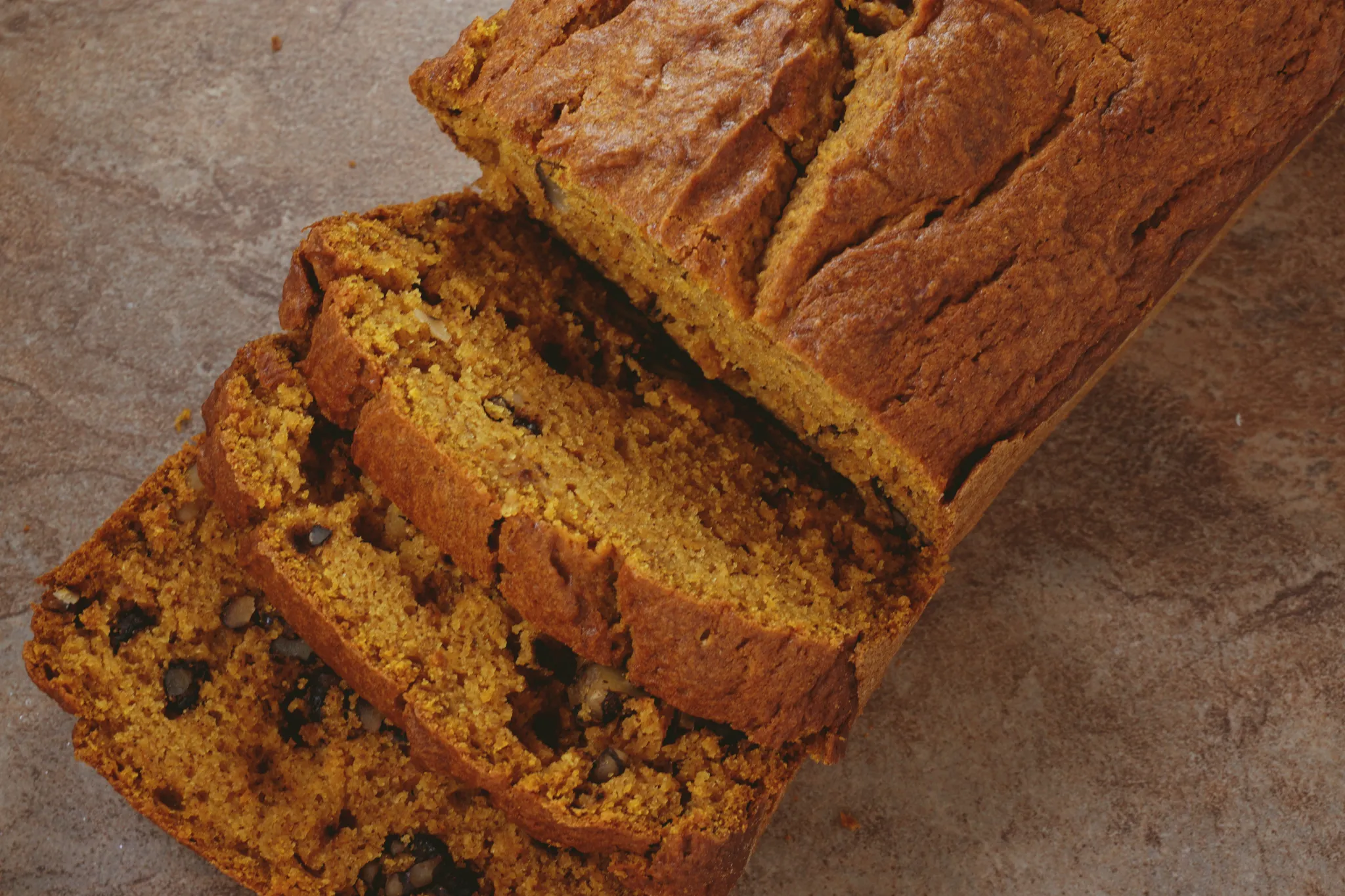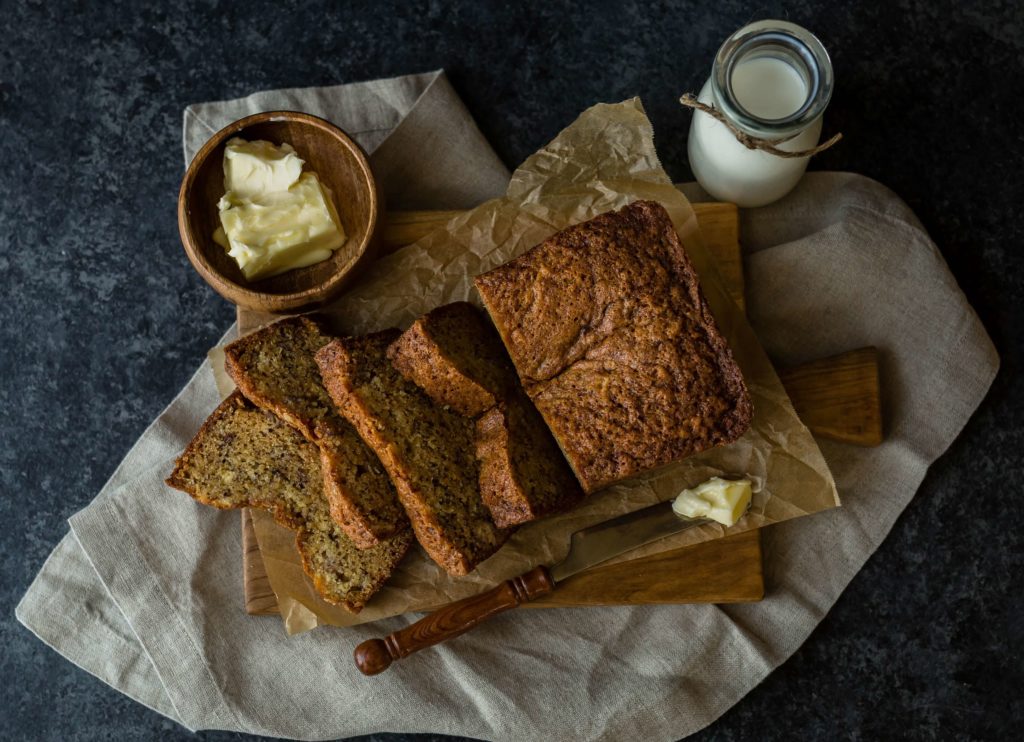
Are you craving a delicious homemade banana bread but don’t have any self-raising flour on hand? Don’t worry, I’ve got you covered! In this article, I’ll share with you a fantastic banana bread recipe that doesn’t require self-raising flour. You’ll be able to enjoy a moist and flavorful loaf of banana bread without the need for a special ingredient. So let’s get baking and satisfy those banana bread cravings!
There’s nothing quite like the comforting aroma of freshly baked banana bread wafting through your kitchen. But what if you don’t have any self-raising flour in your pantry? No problem! I’m here to show you how to make a delectable banana bread without the need for self-raising flour. With a few simple substitutions, you’ll still achieve that perfect rise and tender texture. Get ready to impress your family and friends with this easy and delicious recipe!
Why Use Self-Raising Flour in Banana Bread?

Banana bread is a beloved treat that is enjoyed by people of all ages. Its moist and flavorful texture, combined with the sweet taste of ripe bananas, makes it a perfect snack or breakfast option. However, you may come across recipes that call for self-raising flour, which might leave you wondering why it’s necessary. Let’s delve into the reasons behind using self-raising flour in banana bread.
1. Convenience
One of the key reasons why self-raising flour is used in banana bread recipes is convenience. Self-raising flour is a combination of all-purpose flour and baking powder, which eliminates the need to measure and mix these ingredients separately. It saves you time and effort, especially if you don’t have baking powder on hand.
2. Ensures a Perfect Rise
The baking powder in self-raising flour plays a crucial role in making banana bread rise properly. It creates carbon dioxide gas bubbles when heated, causing the bread to expand and become light and fluffy. Without the addition of self-raising flour, your banana bread may end up dense and flat.
3. Balances the Texture
Self-raising flour helps in achieving the ideal texture for banana bread. The combination of all-purpose flour and baking powder ensures a tender crumb and a moist interior. It prevents the bread from becoming too dense or dry, resulting in a more enjoyable eating experience.
However, if you don’t have self-raising flour on hand or prefer to avoid it for dietary reasons, don’t worry! There are simple substitutions you can make to achieve similar results. You can replace self-raising flour with a mixture of all-purpose flour and baking powder in a 1:2 ratio. For example, if the recipe calls for 2 cups of self-raising flour, use 2 cups of all-purpose flour with 4 teaspoons of baking powder.
Alternative Flours for Banana Bread
If you don’t have self-raising flour on hand or prefer to avoid it for dietary reasons, don’t worry! There are plenty of alternative flours you can use to make delicious banana bread. These options not only provide different flavors and textures but also offer various nutritional benefits. Let’s explore some of the best alternatives:
1. All-Purpose Flour
The most common alternative to self-raising flour is all-purpose flour, which is versatile and readily available. When using all-purpose flour, you’ll need to add some leavening agents such as baking powder and salt to ensure the bread rises properly. For every cup of all-purpose flour, mix in 1 1/2 teaspoons of baking powder and 1/4 teaspoon of salt.
2. Whole Wheat Flour

If you’re looking to add more fiber and nutrients to your banana bread, consider using whole wheat flour. It has a nuttier flavor and denser texture compared to all-purpose flour, giving your bread a wholesome taste. Use the same measurement as all-purpose flour, but keep in mind that whole wheat flour can make the bread slightly denser.
3. Almond Flour
For those following a gluten-free or low-carb diet, almond flour is an excellent choice. It adds a subtle nutty flavor and a moist texture to your banana bread. Due to its high fat content, almond flour can make the bread denser, so it’s recommended to mix it with a lighter flour like all-purpose flour or use a smaller amount.
4. Oat Flour
Another gluten-free option is oat flour, which is made by grinding rolled oats. Oat flour creates a soft and tender texture in your banana bread while adding a mild, slightly sweet flavor. You can make your own oat flour by blending rolled oats in a food processor until they reach a fine consistency. Substitute the self-raising flour with an equal amount of oat flour.
Remember, when using alternative flours, the texture and taste of your banana bread may vary slightly. However, don’t be afraid to experiment and find your favorite combination. Whether you choose all-purpose flour, whole wheat flour, almond flour, or oat flour, you’ll still end up with a delicious homemade banana bread that everyone will love!
So now that you know about the various alternative flours, let’s move on to some creative additions and substitutions you can make to enhance the flavor and texture of
Adjusting the Recipe Without Self-Raising Flour
If you find yourself craving a delicious slice of banana bread but don’t have any self-raising flour on hand, don’t worry! There are simple substitutions you can make to still achieve a moist and flavorful loaf. In this section, we’ll explore different options for adjusting your banana bread recipe without using self-raising flour.

Option 1: All-Purpose Flour
« A Guide to Making Banana Extract: Step-by-Step Process and Storage Tips
Delicious banana nut bread recipe with crunchy pecans »
One of the easiest and most common substitutions for self-raising flour is all-purpose flour. When using all-purpose flour, you’ll need to add a rising agent to ensure your banana bread still gets that perfect rise. For every cup of all-purpose flour, add 1 1/2 teaspoons of baking powder and 1/4 teaspoon of salt to the recipe. This will help the bread rise and maintain its texture.
Option 2: Whole Wheat Flour
If you’re looking for a healthier twist to your banana bread, whole wheat flour is a great alternative. Not only does it add a nutty flavor, but it also provides more fiber and nutrients. Keep in mind that whole wheat flour can make your bread denser, so you may want to add a little extra moisture to the recipe, such as an additional mashed banana or a splash of milk.
Option 3: Almond Flour
For those following a gluten-free diet or looking for a grain-free option, almond flour is a fantastic choice. It’s made from ground almonds, giving your banana bread a delightful nutty taste and a moist texture. When using almond flour, it’s important to note that it absorbs more moisture, so you may need to adjust the amount of liquid in your recipe. Start by reducing the amount of liquid ingredients slightly and adding more if needed.
Option 4: Oat Flour
Oat flour is another gluten-free alternative that adds a hearty and slightly nutty flavor to your banana bread. You can easily make oat flour at home by grinding rolled oats in a blender or food processor until they reach a flour-like consistency. Keep in mind that oat flour can make your bread denser, so you may want to combine it with another flour, like all-purpose flour or almond flour, to achieve the desired texture.
Remember, when using alternative flours, the texture and taste of your banana bread may vary slightly from the traditional recipe. Don’t be afraid to experiment and find your favorite combination of flours. Whether you choose all-purpose flour, whole wheat
Tips for Baking Banana Bread Without Self-Raising Flour
Baking banana bread without self-raising flour is easier than you may think. With a few simple tips and substitutions, you can still enjoy a deliciously moist and flavorful loaf of banana bread. Let’s dive into the world of alternatives and discover how to make a perfect loaf of banana bread without self-raising flour.
1. Use All-Purpose Flour: All-purpose flour is a versatile option for baking banana bread. It provides a good texture and structure to the bread. You can use the same amount of all-purpose flour as mentioned in the recipe, without any adjustments.
2. Try Whole Wheat Flour: For a healthier twist, substitute some or all of the all-purpose flour with whole wheat flour. It adds a nutty flavor and boosts the nutritional value of your banana bread. Start by replacing half of the all-purpose flour with whole wheat flour and see how you like it.
3. Experiment with Almond Flour: If you’re looking for a gluten-free option, almond flour is a fantastic choice. It adds a delightful nuttiness to the bread and keeps it moist. Replace the all-purpose flour with an equal amount of almond flour, and you’ll have a banana bread that’s both gluten-free and delicious.

4. Give Oat Flour a Go: Oat flour is another gluten-free alternative that works well in banana bread. It adds a slightly sweet flavor and a lovely chewiness. Replace the all-purpose flour with oat flour, using the same measurement, and enjoy a hearty and wholesome banana bread.
5. Adjust the Leavening Agents: Without self-raising flour, you’ll need to adjust the leavening agents in your recipe. Add 1 teaspoon of baking powder for each cup of flour used. This will ensure that your banana bread rises properly.
Remember, baking is all about experimentation and finding what works best for you. Don’t be afraid to mix and match different flours to create your own unique twist on banana bread. Happy baking!
Still to come:
- Banana bread recipe without self-raising flour
- Additional tips and tricks for perfecting your banana bread
- Conclusion
Conclusion
Now that you have learned about baking banana bread without self-raising flour, you have a variety of options to choose from. All-purpose flour, whole wheat flour, almond flour, and oat flour can all be used as substitutes. Just remember to adjust the leavening agents accordingly for the best results.
Don’t be afraid to get creative and experiment with different flours to find the combination that suits your taste buds. Banana bread is a versatile treat that can be customized to your liking.

In addition to the alternative flours, we have provided a delicious banana bread recipe without self-raising flour. We hope you enjoy trying it out and perfecting your banana bread baking skills.
Remember to keep in mind the additional tips and tricks we shared to help you achieve the perfect texture and flavor. With a little practice and experimentation, you’ll be baking the best banana bread in no time.
So go ahead, grab those ripe bananas, and start baking your own homemade banana bread without self-raising flour. Your taste buds will thank you!
















